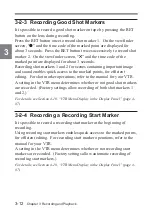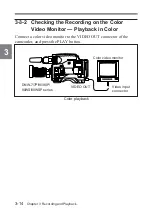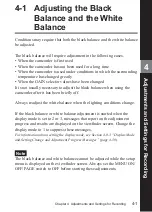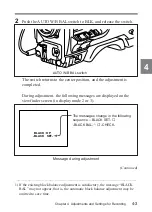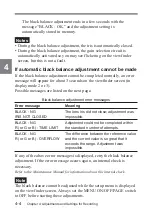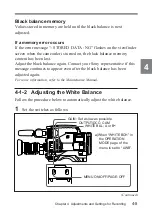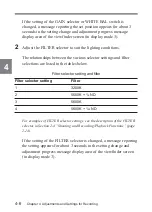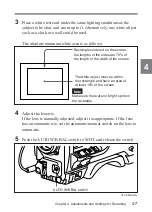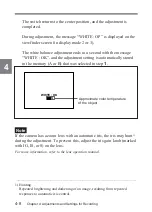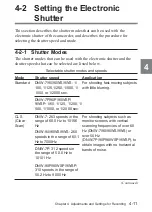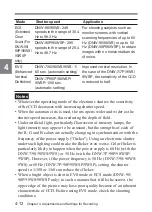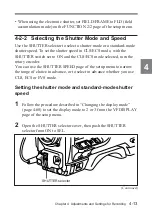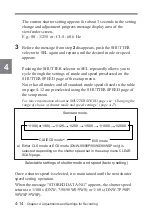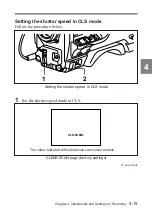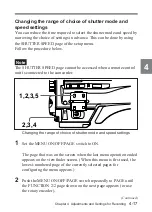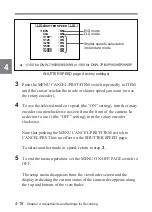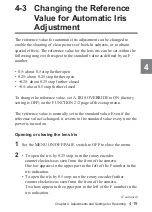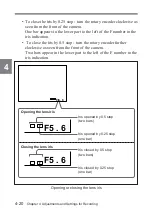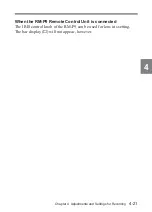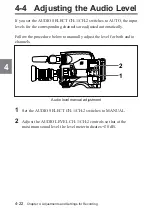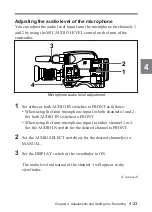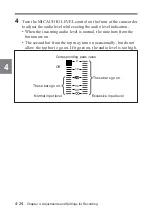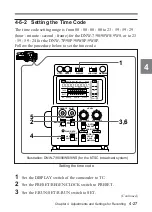
4-12
Chapter 4 Adjustments and Settings for Recording
4
Mode
Application
Shutter speed
ECS
(Extended
Clear
Scan) (For
DNW-90/
90P/90WS/
90WSP
only)
DNW-90/90WS: 248
speeds in the range of 30.4
Hz to 58.3 Hz
DNW-90P/90WSP: 295
speeds in the range of 25.4
Hz to 48.7 Hz
For shooting subjects such as
monitor screens with vertical
scanning frequencies of up to 60
Hz (DNW-90/90WS) or up to 50
Hz (DNW-90P/90WSP), to obtain
images with no horizontal bands
of noise.
DNW-7/90/90WS/9WS: 1/
60 sec. (automatic setting)
EVS
(Enhanced
Vertical
Definition)
Improved vertical resolution. In
the case of the DNW-7/7P/9WS/
9WSP, the sensitivity of the CCD
is reduced to half.
DNW-7P/90P/90WSP/
9WSP: 1/50 sec.
(automatic setting)
Notes
• Whatever the operating mode of the electronic shutter, the sensitivity
of the CCD decreases with increasing shutter speed.
• When the automatic iris is used, the iris opens wider and wider as the
shutter speed increases, thus reducing the depth of field.
• Under artificial light, particularly fluorescent or mercury lamps, the
light intensity may appear to be constant, but the strengths of each of
the R, G and B colors are actually changing in synchronization with the
frequency of the power supply (“flicker”). Using an electronic shutter
under such lighting could make the flicker even worse. Color flicker is
particularly likely to happen when the power supply is 60 Hz (with the
DNW-7/90/90WS/9WS) or 50 Hz (with the DNW-7P/90P/90WSP/
9WSP). However, if the power frequency is 50 Hz (DNW-7/90/90WS/
9WS) or 60 Hz (DNW-7P/90P/90WSP/9WSP), setting the shutter
speed to 1/100 or 1/60 can reduce this flicker.
• When a bright object is shot in EVS mode or ECS mode (DNW-90/
90P/90WS/90WSP only) in such a manner that it fills the screen, the
upper edge of the picture may have poor quality because of an inherent
characteristic of CCD. Before using EVS mode, check the shooting
conditions.

